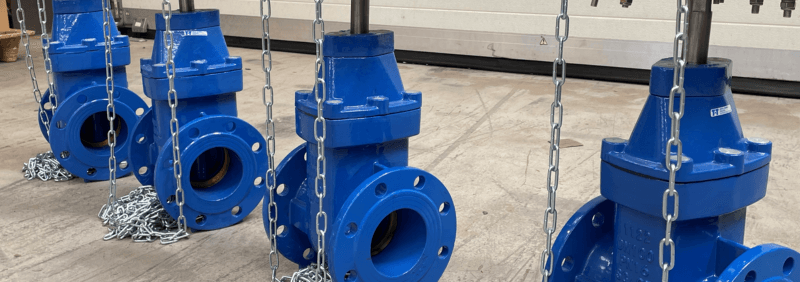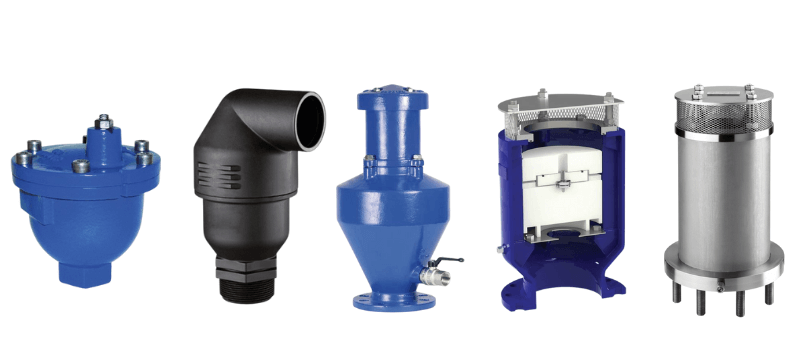What is a Gate Valve?

A gate valve is a device used to stop and start the flow of liquid and isolate sections of a water supply as required. Sometimes referred to as a sluice valve, there are many different types of gate valves suitable for various applications in utility distribution, industrial and HVAC pipeline settings. Let’s take a look at what a gate valve is used for, the differences between the most common types, and the things to consider when specifying a gate valve.
WHAT IS A GATE VALVE?
A gate valve is a type of linear valve used to isolate areas of a water supply. As the name suggests, it acts like a gate that shuts off the flow and opens it again when needed.
Gate valves work via a gate or wedge that lifts (opens) or lowers (closes) into the path of the flowing liquid. Motion is produced by an actuator that is connected to the stem of the gate, which may be manual, electrically, pneumatically or hydraulically powered. They may have a rising stem, meaning it is fixed to the gate, or a non-rising stem, where it is fixed to the actuator and remains within the valve body. The latter is most commonly used in the waterworks industry and is suitable for underground applications where there is limited vertical space.
Gate valves may also sometimes be referred to as stop valves, line valves, wedge gate valves and sluice valves, but they are not to be confused with sluice gates or penstocks. These are altogether larger devices used to severe the flow of sewage and water in treatment plants and drainage systems, etc.
WHAT IS A GATE VALVE USED FOR?
A gate valve is commonly used for isolation duties within potable water, wastewater, sewage and fire main applications. They may be used during maintenance tasks and repair works, as well as being deployed in new installations.
There are many different types of gate valves to suit different applications. Some of the most common designs include wedge gate valves, parallel gate valves, knife gate valves, and rising/non-rising stem gate valves. Generally speaking, you can classify gate valves in three different ways:
- According to the disk type - e.g. taper wedge vs flexible vs split/parallel disk gate valves
- According to stem movement - rising stem vs non-rising stem gate valves
- According to bonnet joint - screwed vs bolted vs welded
The best type to deploy will very much depend on what the gate valve is used for. For example, metal seat valves use a non-ferrous metal face, making them ideally suited to wastewater and sewage applications. When isolating water and clean neutral fluids, resilient seated gate valves provide the ideal solution and work using a rubber encapsulated wedge. Meanwhile, knife gate valves are ideal for handling dense fluids and dry bulk solids. Most gate valves deployed in the waterworks industry have non-rising stems, also referred to as inside screw, meaning the stem remains within the body of the valve.
T-T Flow offers a wide variety of gate valves designed to British and European Standard, with many different options to suit differing applications.
For more information or to discuss your requirements, speak to our expert team on +44 (0)1630 647200.



